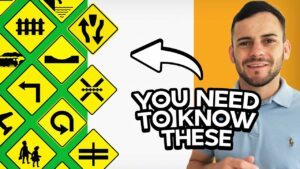Driving lessons Tallaght-Tallaght Test Route 1
When it comes to obtaining a driving license in Ireland, taking the driving test can be nerve-wracking for many. Tallaght, Dublin, as one of the busiest test centres in the country, can present a unique set of challenges to potential drivers. But with the right preparation and understanding, you can not only pass your driving test but also become a safe and confident driver on the roads of Dublin.
**Tallaght Driving Test Centre: The Basics**
Located in the bustling suburb of Tallaght, the Dublin driving test centre caters to a vast number of applicants each year. Known for its diverse range of roads and traffic conditions, Tallaght provides an excellent ground for testing your driving skills. From navigating the bustling roundabouts to mastering the quiet residential streets, taking your driving test in Tallaght ensures you’re ready for the diverse driving conditions Dublin offers.
**Preparation is Key**
1. **Know the Routes:** While the exact route for your test remains a surprise until the day, familiarising yourself with Tallaght’s common roads and tricky junctions is crucial. Spend time driving around areas like the M50, N81, and local residential zones.
2. **Brush Up on the Rules:** The Rules of the Road book is an invaluable resource. Ensure you’re up-to-date with the latest rules, especially those concerning roundabouts, pedestrian crossings, and parking.
3. **Practise Manoeuvres:** In Tallaght, you’ll likely be tested on manoeuvres like hill starts, turnabouts, and parallel parking. Find quiet spots around Tallaght, like the residential areas of Tymon North or Kingswood, to perfect these skills.
**Test Day Tips**
– **Arrive Early:** Dublin traffic can be unpredictable. Aim to reach the Tallaght test centre at least 15 minutes before your scheduled time.
– **Stay Calm:** Remember, the examiner is there to ensure you can drive safely, not to catch you out. Deep breaths and a positive mindset go a long way.
– **Ask Questions:** If you’re unsure about any instruction given during the test, don’t hesitate to ask the examiner to repeat or clarify.
**Why Choose Tallaght for Your Driving Test?**
While some may find the idea of taking a test in one of Dublin’s busiest areas daunting, there are advantages to choosing Tallaght. Passing your test here means you’ve navigated through some of the most challenging driving conditions Dublin has to offer. Plus, with a plethora of driving schools and instructors familiar with the area, you’re in good hands.
**Conclusion**
Passing your driving test in Tallaght, Dublin, is a significant accomplishment. With the right preparation and mindset, you can conquer the test and enjoy the freedom of the open road. Whether you’re a Dublin native or new to the area, remember that every driver started with that first test. Embrace the challenge, and soon enough, the roads of Dublin will be yours to explore.
—
**SEO Keywords**:
Driving test, Tallaght Dublin, driving license in Ireland, Dublin driving test centre, M50, N81, Rules of the Road, Tymon North, Kingswood, manoeuvres, driving schools, Dublin traffic, examiner.



